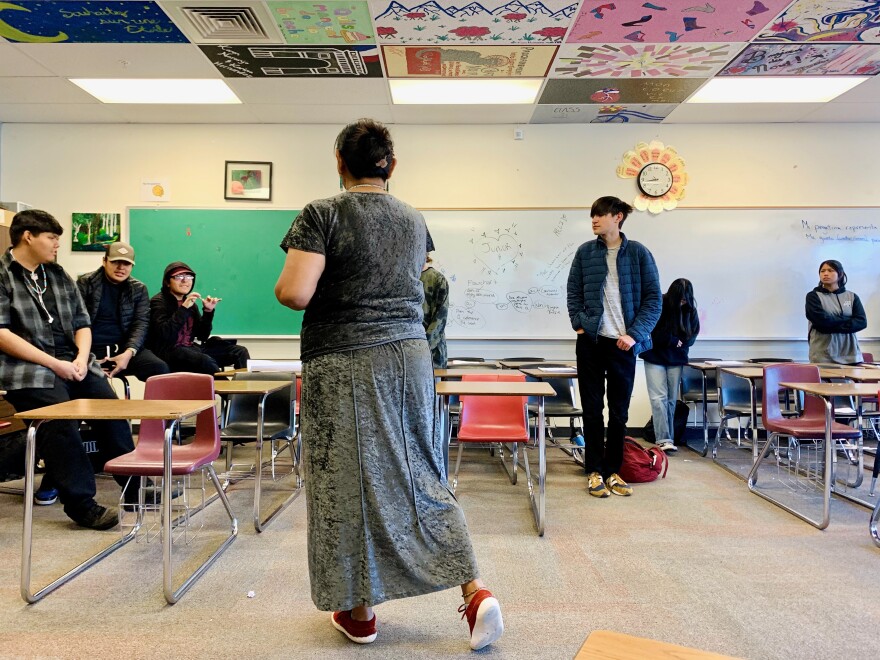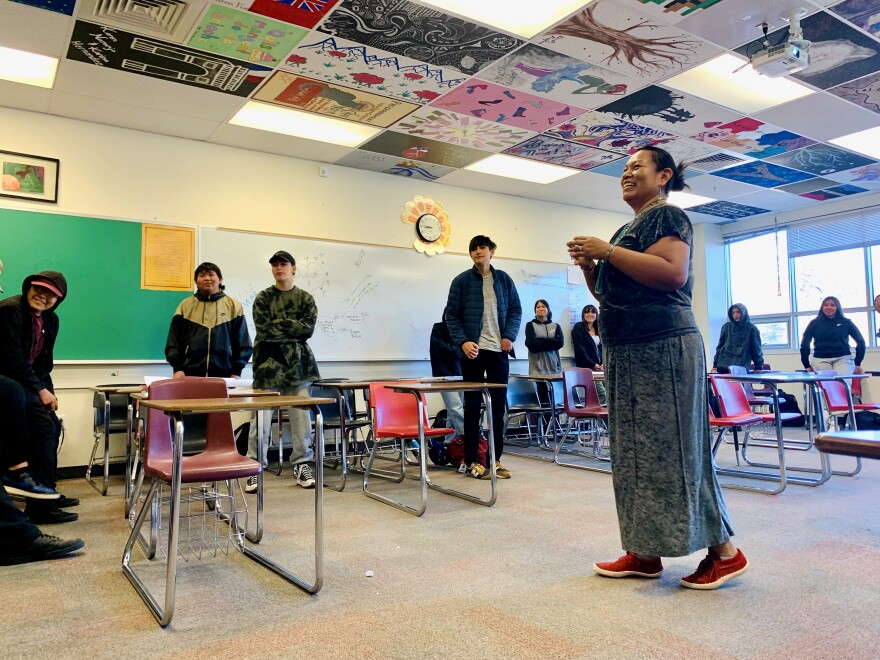Editor's note: An earlier version of this story indicated that the Navajo language class at Durango is the first of its kind in Colorado. The story has been corrected to say a similar class was previously taught in Montezuma County.
At 8:10 am on a Thursday at Durango High School, Elfreida Begay had her students on their feet. She coached them on how to say words for various body parts and had them move their bodies to mimic each new word.
Begay’s class is the first Navajo language class at Durango High School. Navajo is the third language the school offers, after Spanish and French. Durango High School is one of the first public schools in the state to offer a Navajo language course. Montezuma-Cortez High School in Cortez also taught a Navajo language class for a number of years until 2017.
Begay started at Durango High School five years ago as an administrative assistant. But before she was employed there, she was pushing Navajo language instruction. As an undergraduate at Fort Lewis in the 2000s, Begay noticed that non-Native instructors were teaching the Navajo language.
“He was a white guy,” Begay said. “He’s retired now, and listening to him and seeing him teaching. I was thinking, ‘I can do this, I can totally do this.’”

To become a teacher, Begay needed a master’s degree in bilingual education and a certificate from the Navajo Nation to allow her to teach the language. The school hired her as a teacher earlier this year and approved her class for this fall semester.
Rachel Colsman is a Vice Principal at Durango High School. She helped Begay get the class approved and make it a part of the schedule.
“Elfreida was willing to go above and beyond to get the certifications because, at the end of the day, it's what's best for kids,” said Colsman.
In the classroom, Begay was in her element teaching Navajo. She wanted students who take four years of Navajo language classes to earn a seal of biliteracy.
“I am super excited to be given this opportunity. At the same time, it's about darn time that we have something available within Indigenous culture with an Indigenous language here in Durango, especially since we're just an hour north of Navajo country. Indigenous languages need more representation here in this part of the country. We're in the Southwest. We should have all the languages here,” said Begay.
“It's such a cool class, such a different way of learning,” said Colsman, “steeped in the oral tradition, the true meaning behind the words and behind the sounds. Everything is tied together. For those students that often struggle with a foreign language, it's just that approach oftentimes works better for them.”

Based on the success of this class, Begay will continue to teach Navajo next year with introductory and level two classes. Colsman said the classes are a commitment to meeting the needs of Navajo students.
“We were passionate about being able to offer something to our students. At the end of the day, the reservation is a ways off, and many of them have family down in Window Rock and the Shiprock area. We wanted to bring a little piece of home here because this is home for them as well,” said Colsman.
Colsman explained why this class hadn’t been initiated sooner at Durango High School.
“I don't think the timing was right,” said Colsman. “In the past, there wasn't the person that was passionate about pushing it forward.
I'll just name it here: there wasn't always the focus on equity and diversity. I applaud Durango 9-R for taking a lead in that work of creating a space where all cultures and backgrounds feel welcome, because that's not always been the case in this area.”
This story is part of Voices From the Edge of the Colorado Plateau. Voices is a reporting collaboration between KSUT Public Radio and KSJD Community Radio. It seeks to cover underrepresented communities in the Four Corners. The multi-year project will cover Native, Indigenous, Latino/Latina, and other communities across southwest Colorado.
Explore more Voices From the Edge of the Colorado Plateau stories.







